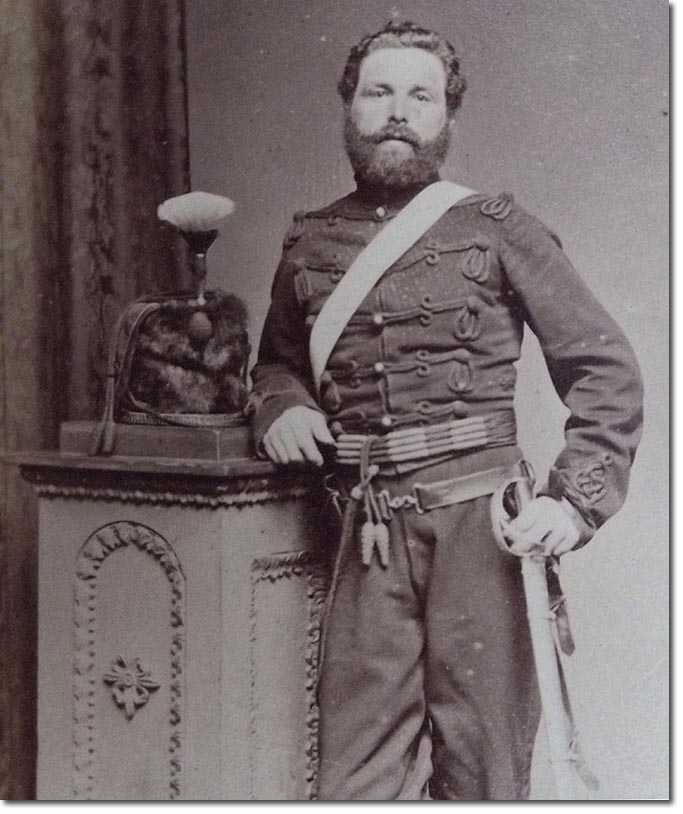|
|


|
|
This photo was sent to us by Stephen Grist who tells us that it is his great great grandfather William Grist who was born in 1830 in Somerset. He enlisted in the Grenadier Guards and fought at Sevastopol. He was a miner in a village near Radstock in Somerset. The uniform did not bear any resemblance to the North or West Somerset Yeomanry so it became clear that he must have moved to the South Nottinghamshire area to find work.
The South Notts Yeomanry adopted the hussar fur busby in 1866 to replace the shako. It had a red bag and yellow cap-lines with acorn ends, and a white over red horsehair upright plume. There was also a yellow coiled cord boss on the front. The white enamel pouch-belt also replaced the black leather one. Officers had to purchase a gold pouch-belt to replace the black leather belt with wavy gold lines which was relegated to undress. The waist-belt seen here with a snake clasp is of brown leather and it seems that he does not have a sabretache like the regular hussar privates. The most puzzling aspect of the photo is the barrel sash around his waist. According to the regimental history, this was discontinued for other ranks in 1865, before the busby and white belt were taken into wear. Previously the other ranks wore a red and yellow worsted barrel-sash and the officers wore, and continued to wear, a gold and crimson one. The colour yellow always came out as black in old photos, as we can see by the cord on his jacket, but the yellow on the barrel-sash here is pale in colour. Another puzzle is the lack of a Crimean medal. |
South Nottingham Hussars | Uniforms
Armed Forces | Art and Culture | Articles | Biographies | Colonies | Discussion | Glossary | Home | Library | Links | Map Room | Sources and Media | Science and Technology | Search | Student Zone | Timelines | TV & Film | Wargames
